
-
Find the right food for your petTake this quiz to see which food may be the best for your furry friend.Find the right food for your petTake this quiz to see which food may be the best for your furry friend.Featured products
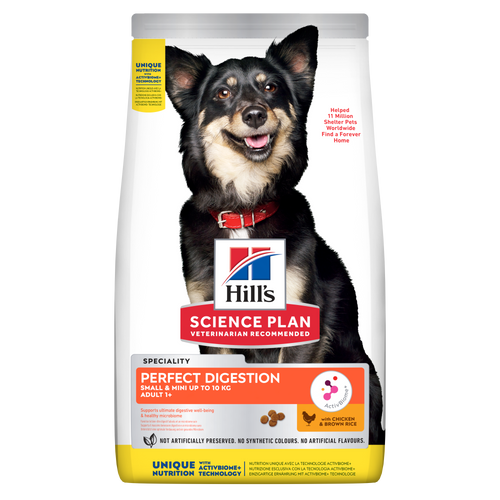 Perfect Digestion Small & Mini Adult Dog Food
Perfect Digestion Small & Mini Adult Dog FoodHill's Science Plan Perfect Digestion Small & Mini Breed Adult Dog Food with Chicken & Brown Rice supports ultimate digestive well-being & a healthy microbiome.
Shop Now Small & Mini Mature Adult 7+ Dog Food
Small & Mini Mature Adult 7+ Dog FoodHill's Science Plan Small & Mini Breed Mature Adult Dog Food with Chicken is a complete pet food, specially formulated with ActivBiome+ Multi-Benefit Technology.
Tailored nutrition to support graceful ageing in small dogs. Specially made with a synergistic blend of nutrients for energy & vigor.Shop Now Perfect Digestion Large Breed Puppy Food
Perfect Digestion Large Breed Puppy FoodPrecisely balanced nutrition with Hill's ActivBiome+ prebiotic blend actively contributes to supporting digestive health and overall well-being to help your pet feel their best
Shop NowFeatured products Kitten Food
Kitten FoodTender chicken chunks in gravy for kittens, with omega-3s for healthy eye & brain development and high-quality protein to support muscle growth. With balanced minerals to promote strong bones & teeth.
Shop Now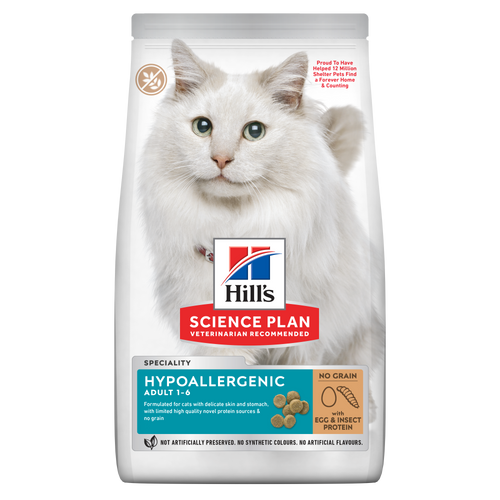 Hypoallergenic Dry Cat Food
Hypoallergenic Dry Cat FoodHILL'S SCIENCE PLAN Hypoallergenic Adult cat food with egg & insect protein is a complete pet food for adult cat 1–6 years old. It's formulated for cats with delicate skin and stomach, with limited high quality novel protein sources & no grain.
Shop Now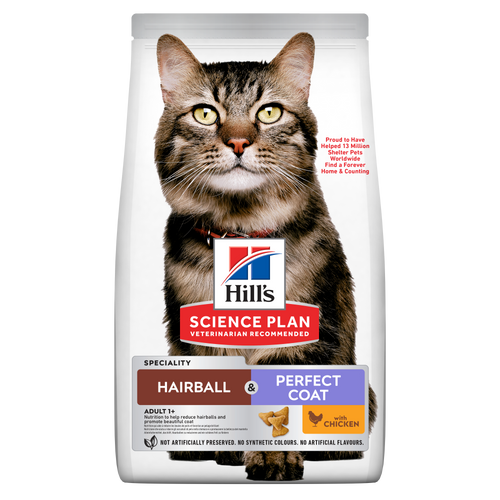 Hairball & Perfect Coat Adult Cat Food
Hairball & Perfect Coat Adult Cat FoodHill's Science Plan HAIRBALL & PERFECT COAT Adult cat food with Chicken is specially formulated to effectively help avoid hairball formation in adult cats while promoting a beautiful coat. Thanks to its mix of essential Omega-6 fatty acids, this food benefits the cat's skin and fur keeping them healthy and shiny. Our Advanced Fibre Technology helps reduce hairballs by naturally promoting their passage through the gut. This food is formulated with high-quality protein for a perfectly balanced, great-tasting recipe.
Shop Now -
Dog
- Dog Tips & Articles
-
Health Category
- Weight
- Food & Environmental Sensitivities
- Urinary
- Digestive
- Joint
- Kidney
-
Life Stage
- Puppy Nutrition
- Adult Nutrition
- Senior Nutrition
Cat- Cat Tips & Articles
-
Health Category
- Weight
- Skin & Food Sensitivities
- Urinary
- Digestive
- Kidney
-
Life Stage
- Kitten Nutrition
- Adult Nutrition
Featured articles The Right Diet For Your Pet
The Right Diet For Your PetLearn what to look for in healthy pet food & nutrition, including ingredients, quality of the manufacturer, your pet's age, and any special needs they have
Read More Pet Food Storage Tips
Pet Food Storage TipsWhere you store your cat and dog food can make a big difference in the quality and freshness once it is opened. Here are some common questions and recommendations for optimal storage for all of Hill’s dry and canned cat and dog food.
Read More Understanding Your Pet's Microbiome
Understanding Your Pet's MicrobiomeLearn what a pet's microbiome is, how it contributes to your pet's gut & overall health, and why nutrition is important in maintaining healthy microbiomes.
Read More -


Pet parents are more invested in the health of their pets now than ever before. Learning how to take a dog's temperature and how to take a cat's temperature is clear evidence of this commitment. Veterinarians are delighted to see more pet parents actively engaging with the health of their pets, and most are more than happy to help them acquire this simple skill.
Learning how to take a dog or a cat's temperature is fairly easy to do. Let's look at the best way to take the temperature of your furry family members.
Why You Should Learn To Take Your Pet's Temperature

As in humans, dogs' and cats' body temperatures can tell us a lot about their overall health. While these species' temperatures are higher than ours (101.3 degrees Fahrenheit / 38.5 degrees Celsius), it's easy enough to tell what's too high or too low.
Fevers (above 102.5 degrees Fahrenheit / 39.2 degrees Celsius) can inform pet parents of issues like heat stroke, infections or systemic inflammatory diseases, as noted by the Merck Veterinary Manual.
Meanwhile, low temperatures (below 100 degrees Fahrenheit / 37.8 degrees Celsius) can tell us whether they've lost too much body heat. They may be hypothermic (as with exposure to the elements in winter) or possibly experiencing the effects of shock, low blood sugar, malnutrition or another severe system-wide disease.
Modest drops in temperature can even note when a mother is getting ready to give birth to her babies!


Tasty Tips
Young pets may need several visits in their first year for vaccinations. Adult pets generally benefit from annual check-ups, while senior or special-needs pets might require more frequent visits.
When To Take a Pet's Temperature
Whenever pets are lethargic, quieter than normal, or exhibit a change in appetite or other normal behaviours, temperature-taking can be helpful. This is especially true for cats, who are notorious for hiding most signs of illness. However, it's important to understand that plenty of illnesses can present without changes in body temperature. Thus, you should only take your pets temperature if you are planning to promptly contact a veterinarian and discuss your concerns about your pets health. Additionally, if you do not have experience taking your pet's temperature you should talk to a veterinarian before doing so. This is for the safety of both you and your pet.
Not only can a body temperature reading help you decide how soon to bring your pet to the vet (an elevated temperature should always prompt a call to your veterinarian), but an at-home reading gives the vet very useful information, too.
In fact, at-home temperature-taking is so beneficial that it has become a common teaching point for vets and their teams. If you are interested in learning this skill ask your vet about getting a tutorial as most are happy to teach you how to manage this safely at home.
How To Take a Dog's Temperature
The mechanics of how to take a dog's temperature are simple. Here are a few basics:

- Buy the right tool: A plastic, digital rectal thermometer (for humans) can be found at any pharmacy. (Note: Most digital thermometers serve for either rectal or oral use. Ask your pharmacist if you're unsure.)
- Restrain properly: Most pet parents will find this to be a two-person job. One person can hold their pet's head and keep their body still while the other holds their tail up to facilitate rectal insertion of the thermometer. For dogs who avoid the procedure by sitting down, a third person (to keep the patient in a standing position) may be necessary. Treats and toys are generally helpful as distractors. If your pet becomes distressed or you do not feel you can restrain them safely, it is better to wait on having their temperature taken until they are being evaluated by your vet. Although this information is helpful, it should not be acquired at the risk of compromising the health and well-being of both you and your pet.
- Take their temperature: After applying a bit of petroleum jelly to the business end of the thermometer (a pea-sized amount), insert it into the rectum (an inch is far enough). Then, wait for the beep (or for the digital readout to stabilise) and you're done!
Looking to learn how to take a cat's temperature? The mechanics are just as easy. The only hard part is getting your kitty to behave. Because cats are generally smaller and often resist restraint, cat caretakers may need to try a variety of inducements or restraint techniques. This is where it becomes ideal to have your vet's team demonstrate the best methods for your individual cat.
Things to Keep in Mind When Taking Your Pet's Temperature
When learning how to take a dog's temperature, or a cat's, having the right equipment is essential. For example, glass thermometers can break and expose your pet to mercury and glass, and some older thermometers can take quite a long time to get to temperature.
It's also critical that pet parents take their pet's body temperature from the rectum. Although vets yearn for a less invasive way to take their patients' temperatures, non-rectal methods can be more difficult to interpret.
When learning how to take a cat's temperature, restraining your cat may take some time and patience. Watching online videos on properly restraining your cat can be helpful in these cases, but having your veterinarian show you how to do this for your specific cat remains your best course of action.
It's also important to note that some pets' body temperatures are naturally higher or lower than the majority. Moreover, exercise and excitement can raise a temperature and lengthy inactivity or geriatric age can lower it. Again, anytime you elect to take your pets temperature it should be done with the intention of promptly contacting a veterinarian to discuss your concerns. Finally, it bears repeating that not all pets can be trained to accept this procedure. If the stress it causes is significant or your safety is at risk, at-home temperature-taking should be reconsidered.


One of our staff authors prepared this article for you
Related products

HILL'S SCIENCE PLAN Hypoallergenic Adult cat food with egg & insect protein is a complete pet food for adult cat 1–6 years old. It's formulated for cats with delicate skin and stomach, with limited high quality novel protein sources & no grain.
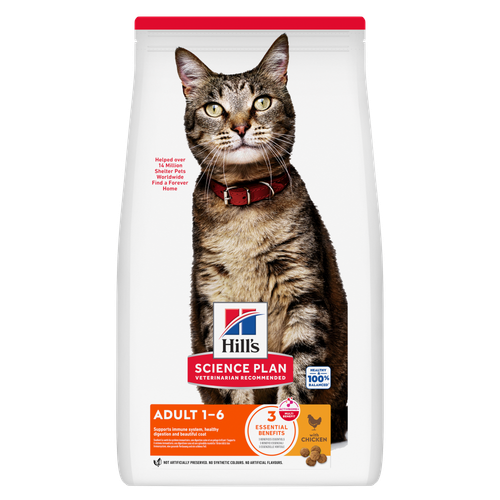
Hill's Science Plan Adult Cat Food with Chicken is a complete pet food, specially formulated with ActivBiome+ Multi-Benefit Technology.
This food is specially formulated to fuel the energy needs of cats during the prime of their life.

Hill's Science Plan HAIRBALL & PERFECT COAT Adult cat food with Chicken is specially formulated to effectively help avoid hairball formation in adult cats while promoting a beautiful coat. Thanks to its mix of essential Omega-6 fatty acids, this food benefits the cat's skin and fur keeping them healthy and shiny. Our Advanced Fibre Technology helps reduce hairballs by naturally promoting their passage through the gut. This food is formulated with high-quality protein for a perfectly balanced, great-tasting recipe.

Tender chicken chunks in gravy for kittens, with omega-3s for healthy eye & brain development and high-quality protein to support muscle growth. With balanced minerals to promote strong bones & teeth.
Related articles

Where you store your cat and dog food can make a big difference in the quality and freshness once it is opened. Here are some common questions and recommendations for optimal storage for all of Hill’s dry and canned cat and dog food.

Learn all about how proteins work in your pet to help them grow strong and healthy tissue and organs.

Learn what a pet's microbiome is, how it contributes to your pet's gut & overall health, and why nutrition is important in maintaining healthy microbiomes.

Learn what to look for in healthy pet food & nutrition, including ingredients, quality of the manufacturer, your pet's age, and any special needs they have
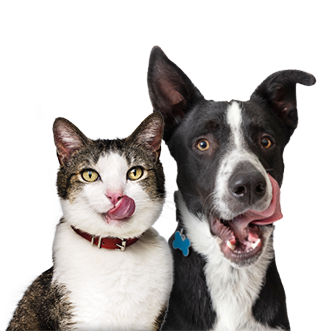
Put your pet on a diet without them knowing
Our low calorie formula helps you control your pet's weight. It's packed with high-quality protein for building lean muscles, and made with purposeful ingredients for a flavorful, nutritious meal. Clinically proven antioxidants, Vitamin C+E, help promote a healthy immune system.
Put your pet on a diet without them knowing
Our low calorie formula helps you control your pet's weight. It's packed with high-quality protein for building lean muscles, and made with purposeful ingredients for a flavorful, nutritious meal. Clinically proven antioxidants, Vitamin C+E, help promote a healthy immune system.

